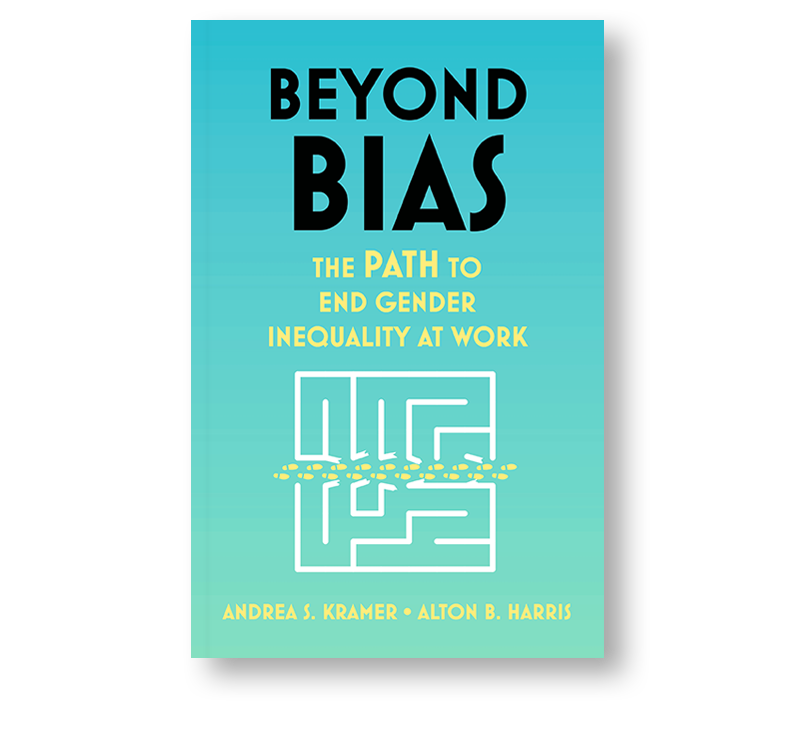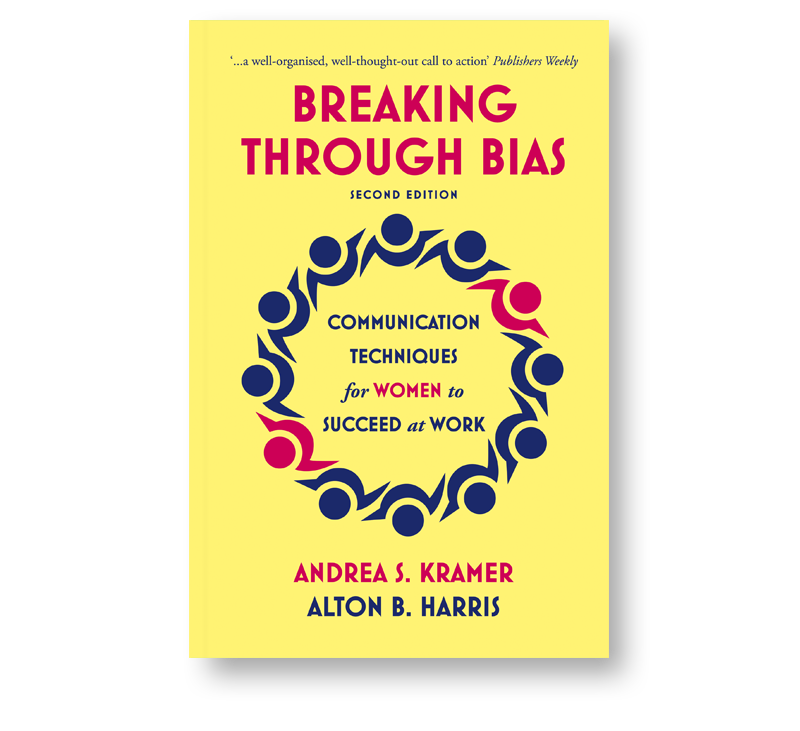
Despite extensive and costly efforts to eliminate workplace gender inequality, little progress has been made in recent years. The problem is that these efforts have largely focused on training people to be less biased and more inclusive. But gender inequality is not primarily a problem caused by individuals’ biases; it is a systemic problem caused by the discriminatory operation of workplace systems, processes, and practices.
Beyond Bias presents a four-prong program—PATH—for directly attacking the systemic nature of this problem. In the authors’ characteristically clear and engaging style, they lay out a comprehensive set of practical and effective actions organizations can take to change their personnel management systems and remove the gendered obstacles that are holding women back; Beyond Bias points the way to what organizations can finally do to systematically remove gender inequality and make workplaces truly inclusive for everyone.
A Must Read for Every Leader
David G. Smith, PhD, Johns Hopkins University & W. Brad Johnson, PhD, U.S. Naval Academy, authors of Good Guys and Athena Rising
Andie and Al Show Us How Big Goals are Met Through Small Wins
Lee Caraher, CEO, Double Forte, Author of Millennials & Management and The Boomerang Principle, and host of Everything Speaks
Timely, Powerful and Compelling
Andi Simon, Ph.D. Corporate Anthropologist and CEO Simon Associates Management Consultants
A Curated Introduction on Workplace Gender Bias
Joan C. Williams, Author of Bias Interrupted: Creating Inclusion for Real and for Good, Harvard Business Review Press, 2021
Foster Deeper Engagement from Both Men and Women
Carol Frohlinger, President, Negotiating Women, Inc.

Second Edition
Breaking Through Bias: Communication Techniques for Women to Succeed at Work
Order today:
Since Breaking Through Bias was published in 2016, the #MeToo movement has exposed just how pervasive sexual harassment is in the workplace. The increase in public misogynistic comments has made clear that explicit gender bias is not a thing of the past; and stay-at-home orders and school closings due to Covid-19 have brought into even sharper focus the discriminatory impact of the unequal division of child care and household responsibilities between most couples.
In this Second Edition of Breaking Through Bias, the authors, Kramer and Harris, explain how these recent developments fit into a larger pattern of implicit or unconscious gender bias that imposes serious obstacles to women’s career advancement. They argue persuasively, however, that while this bias is the result of deeply rooted gender stereotypes, women can avoid or overcome its discriminatory consequences by the effective use of “attuned gender communication” to manage the impressions other people have of them.
Kramer and Harris illustrate the use of attuned gender communication in each of the contexts in which gender bias manifests itself: negative bias (women are not as talented as men), benevolent bias (women need men’s support), age bias (older women are not effective workers), motherhood bias (women with children are not committed to their careers), and self-limiting bias (women believing themselves not suited for particular roles).
Drawing on decades of experience supervising, training, evaluating, mentoring, and sponsoring thousands of women as well as exhaustive social science research, Kramer and Harris present in this updated and fully revised Second Edition unique, practical, and highly effective advice women can use to break through bias and achieve the career success they desire and deserve.
Essential Knowledge for Men Who Want to Support Women
Carol Frohlinger, president, Negotiating Women, Inc.
The Perfect Primer to Navigate Gender Bias
Cheryl Procter-Rogers, PR strategist and executive coach, A Step Ahead PR Consulting and Coaching
The book contains so many important facts and valuable information
Daryl Maxwell
This Book Should Be Mandatory Reading
Laurel G. Bellows, managing principal, The Bellows Law Group, P.C. and past president, American Bar Association
A Wake-Up Call for Senior Business Leaders
Lee Richard Tschanz, vice president North America, Sales, Services, and Solutions, Rockwell Automation
Create Your Own Change
Deborah Gillis, president & CEO, Catalyst
Practical and Accessible Strategies
Jeffrey E. Stone, chairman, McDermott Will & Emery LLP
A Great Read for Any Woman Who Wants to Take Control of Her Career
Julie Howard, chairman & CEO at Navigant Consulting, Inc.
Enthusiastically Recommended
Neelum T. Aggarwal, MD, Chief Diversity Officer of American Medical Women's Association; chair of Mentors, Advisors and Peers Committee, Women in Bio (Chicago); associate professor, Departments of Neurological Sciences and Rush Alzheimer's Disease Center
Benevolent Sexism Is as Damaging as It Is Unintentional
Publishers Weekly
Practical Without Asking Women to be Something Other Than Who They Are
Dr. Arin Reeves, author of One Size Never Fits All: Business Development Strategies for Women (And Most Men) and The Next IQ: The Next Generation of Intelligence for 21st Century Leaders
Hugely Impactful Tools
Jan Schakowsky, Congresswoman, 9th District of Illinois
It’s Not You, It’s the Workplace: Women’s Conflict at Work and the Bias that Built It
Order today:
Andie & Al are often asked about same-sex dynamics at work. Men’s relationships with one another are seen as the baseline. What does that mean for women? Is it inevitable that women’s relationships with one another become difficult—even disruptive to their careers?
It’s Not You, It’s the Workplace challenges those ideas with its real-world advice to women on ways to overcome conflict. Most importantly, the book shows how to build upon the many positive aspects of women-to-women relationships in order to foster women’s success. After all, the data is in: When women are truly satisfied in their professions, their organizations thrive. Andie & Al lay out how women, men, and their organizations can and should work together to create workplaces where successful careers are a reality for women.
Expanding on their decades of experience helping women succeed at work, Andie and Al use their combined—but distinctive—female and male perspectives to provide new and discerning viewpoints on the often-fraught scenarios of women working for, working with, supervising, and collaborating with other women. They examine each narrative in depth and provide practical, immediately usable techniques that will allow women to better develop strong networks that will foster their career success, men to help avoid or resolve women-to-women workplace conflicts, and organizations to structure their policies and practices so that bias does not block women’s career satisfaction and advancement to leadership.






